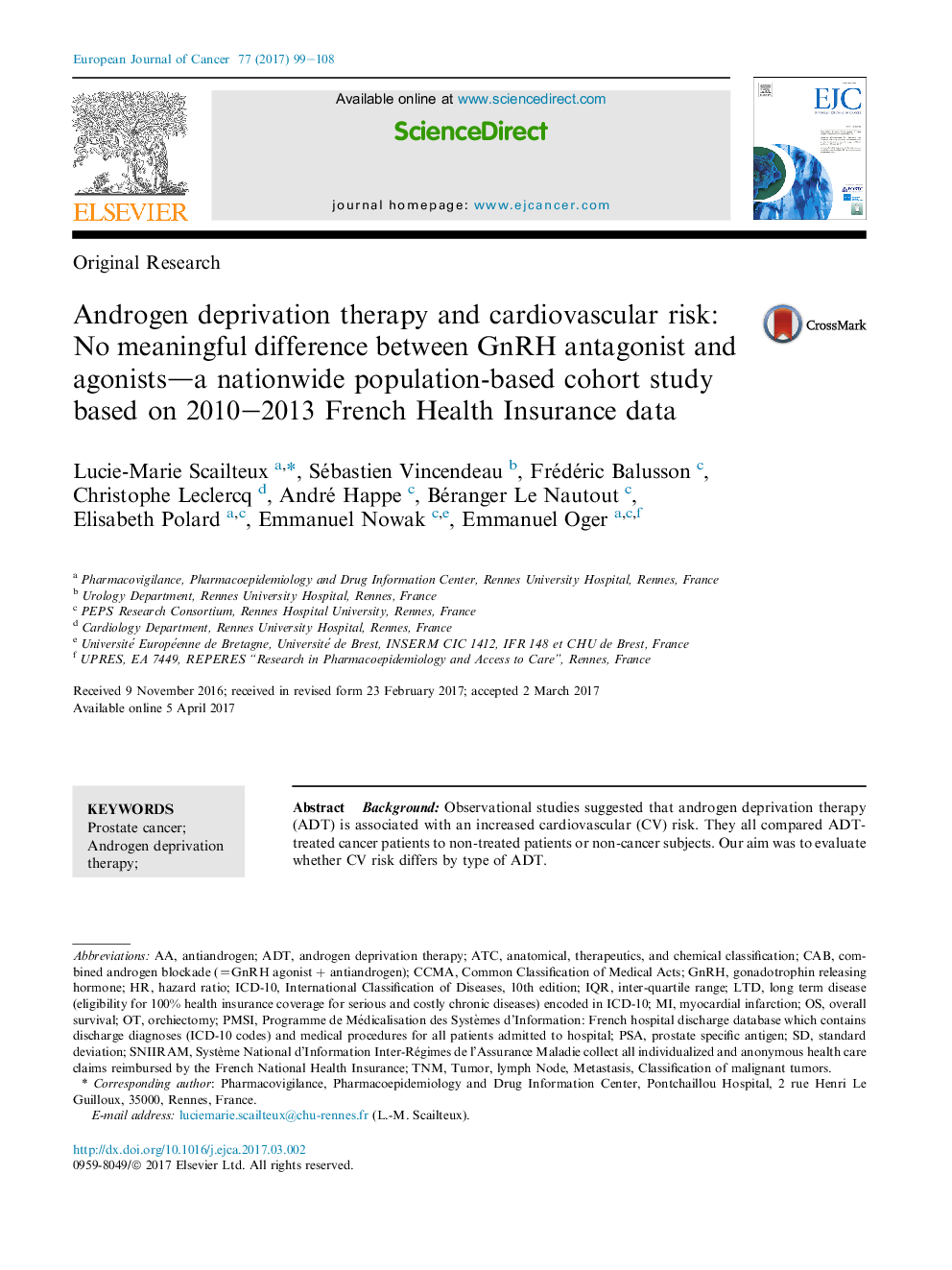| Article ID | Journal | Published Year | Pages | File Type |
|---|---|---|---|---|
| 5526625 | European Journal of Cancer | 2017 | 10 Pages |
â¢Clinically meaningful heterogeneity as regards ischaemic events across androgen deprivation therapies.â¢Compared to gonadotrophin releasing hormone (GnRH) agonist, combined androgen blockade is strongly detrimental.â¢Compared to GnRH agonist, antiandrogens have better profile.â¢Low probability of a clinically meaningful difference when comparing GnRH antagonists to agonists.
BackgroundObservational studies suggested that androgen deprivation therapy (ADT) is associated with an increased cardiovascular (CV) risk. They all compared ADT-treated cancer patients to non-treated patients or non-cancer subjects. Our aim was to evaluate whether CV risk differs by type of ADT.MethodsThrough nationwide population-based claims reimbursement database linked to hospital discharge database, we identified adult men with prostate cancer who initiated ADT (gonadotrophin releasing hormone [GnRH] agonist or antagonist, antiandrogen [AA], combined androgen blockade [CAB]) or had orchiectomy (OT) between 1st July, 2010, and the 31st December, 2011, and followed them up to 31st December, 2013. The main analysis followed an 'on-treatment' approach that censored all patients at the time of first therapeutic modification; it used Cox regression analysis to estimate hazard ratios (HRs) for hospitalisations for ischaemic events (myocardial infarction or ischaemic stroke, whichever came first), adjusted on age, baseline co-morbidities and taking into account death as a competing risk.ResultsAmong the 35,118 new ADT users, 71% received GnRH agonist (reference group), 12% CAB, 13% AA, 3.6% GnRH antagonist and 0.6% had OT. CAB was associated with an increased risk (adjusted HR [95% confidence interval {CI}], 1.6 [1.3-2.0]) and AA with a decreased risk (adjusted HR [95% CI], 0.6 [0.4-0.9]) of ischaemic events when compared to GnRH agonist. No significant association was found with GnRH antagonist (adjusted HR [95% CI], 1.2 (0.7-2.1)).ConclusionCV risk appeared different across ADT modalities. The probability of a clinically meaningful difference when comparing GnRH antagonists to agonists appears rather low. In a context where better overall and cancer specific survival without worsening quality of life is a challenge for clinicians, a potential heterogeneity in CV morbidity becomes crucial when choosing an ADT.
